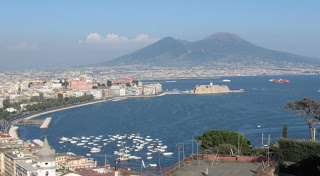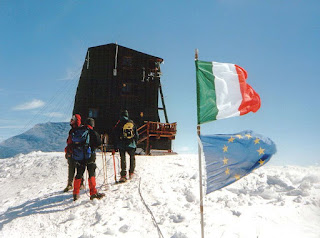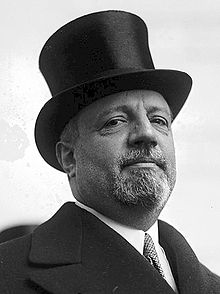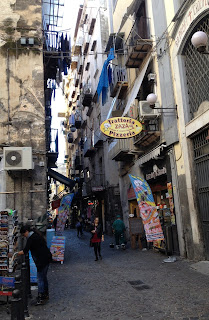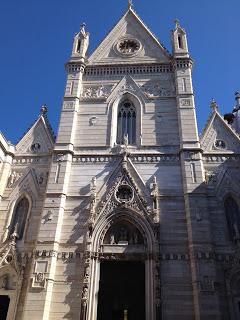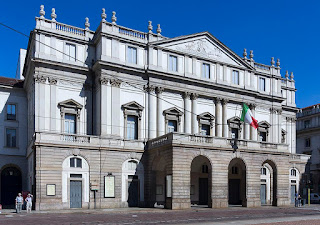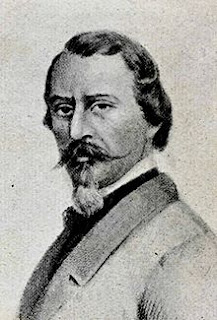How coffee was first introduced to Europe
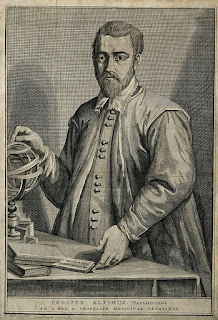 |
| Prospero Alpini's journals suggest he saw coffee for the first time in Egypt |
He is credited with being the first person in Europe to observe and write about the coffee plant.
Alpini went to study medicine in Padua in 1574 and after taking his degree settled down to work as a doctor in nearby Campo San Pietro.
He was very interested in botany and so to extend his knowledge of exotic plants he travelled to Egypt in 1580 as physician to George Emo, the Venetian consul in Cairo.
While in Egypt he studied date trees which helped him to work out that there were gender differences between plants. He wrote that: “the female date trees or palms do not bear fruit unless the branches of the male and female plants are mixed together, or, as is generally done, unless the dust found in the male sheath or male flowers is sprinkled over the female flowers.”
In 1593 he was appointed professor of botany at Padua University and, after he died in 1617, he was succeeded in the role by his son, Alpino Alpini.
His botanical work De Medicina Egyptiorum is believed to contain the first report on the coffee plant ever published in the western world.
Alpini also noted that the Egyptians roasted the seeds of the coffee plant, from which they made a drink. On his return to Venice, he told friends and associates about this drink. Curiously, the discovery of coffee beans was initially heralded for their medicinal qualities. They were sold in pharmacies at a very high cost, which put them out of reach of ordinary people.
 |
| Alpini's illustration of the leaves of the coffee plant |
By the mid-18th century, Venetians could choose from more than 200 coffee houses across the city and other cities in Italy and beyond had taken up the coffee fashion. Coffee houses, such as the Caffè Pedrocchi in Padua, which opened in the centre of the town in 1831, became the places to meet and be seen.
The new drink did not meet with universal approval, however. Some prominent members of the Catholic Church dubbed it 'the drink of the devil' and urged Pope Clement VII to ban its sale. In the event, on tasting coffee himself, the pontiff rejected the notion of banning it. Now with papal approval, the coffee habit went from strength to strength.
Alpini went on to work in Bassano del Grappa and then Genoa, where he was employed as personal physician to Giovanni Andrea Doria, an admiral and a member of a wealthy Genovese family. Later he took a job as prefect at the Botanical Gardens in Padua, becoming an authority on the medicinal use of plants.
Travel tip:
The main building of Padua University, Palazzo del Bò in Via 8 Febbraio in the centre of Padua, was named after the tavern known as Il Bo (‘the ox’ in Venetian dialect) that had been acquired by the university as new premises in 1493. Originally this building housed the university’s renowned medical faculty, where Alpini would have studied. You can take a guided tour of the building and see the pulpit used by Galileo when he taught there between 1592 and 1610. The anatomy theatre, built in 1594, is the oldest surviving medical lecture theatre in the world today. To find Palazzo del Bò, leave Piazza Cavour, passing Caffe Pedrocchi on your right and walk down Via 8 Febbraio. The university building is on the left hand side of the street at its corner with Via San Francesco.
Travel tip:
Alpini was born near Vicenza, which has become famous as the city of Andrea Palladio, the most influential architect of his time, whose ideas have been copied by countless architects in the centuries since. Many of the palaces and buildings designed by Palladio in the centre of Vicenza would have been built during the time Alpini was growing up there, before he went to Padua University. A striking example of his work is the Basilica Palladiana in Piazza dei Signori. The most notable feature of the basilica is the loggia, which shows one of the first examples of what have come to be known as the Palladian window.
 |
| The entrance archway of the Palazzo del Bò in Via 8 Febbraio in the centre of Padua |
The main building of Padua University, Palazzo del Bò in Via 8 Febbraio in the centre of Padua, was named after the tavern known as Il Bo (‘the ox’ in Venetian dialect) that had been acquired by the university as new premises in 1493. Originally this building housed the university’s renowned medical faculty, where Alpini would have studied. You can take a guided tour of the building and see the pulpit used by Galileo when he taught there between 1592 and 1610. The anatomy theatre, built in 1594, is the oldest surviving medical lecture theatre in the world today. To find Palazzo del Bò, leave Piazza Cavour, passing Caffe Pedrocchi on your right and walk down Via 8 Febbraio. The university building is on the left hand side of the street at its corner with Via San Francesco.
| The Piazza dei Signori in Vicenza, the city where Prospero Alpini was born in 1553 |
Alpini was born near Vicenza, which has become famous as the city of Andrea Palladio, the most influential architect of his time, whose ideas have been copied by countless architects in the centuries since. Many of the palaces and buildings designed by Palladio in the centre of Vicenza would have been built during the time Alpini was growing up there, before he went to Padua University. A striking example of his work is the Basilica Palladiana in Piazza dei Signori. The most notable feature of the basilica is the loggia, which shows one of the first examples of what have come to be known as the Palladian window.






